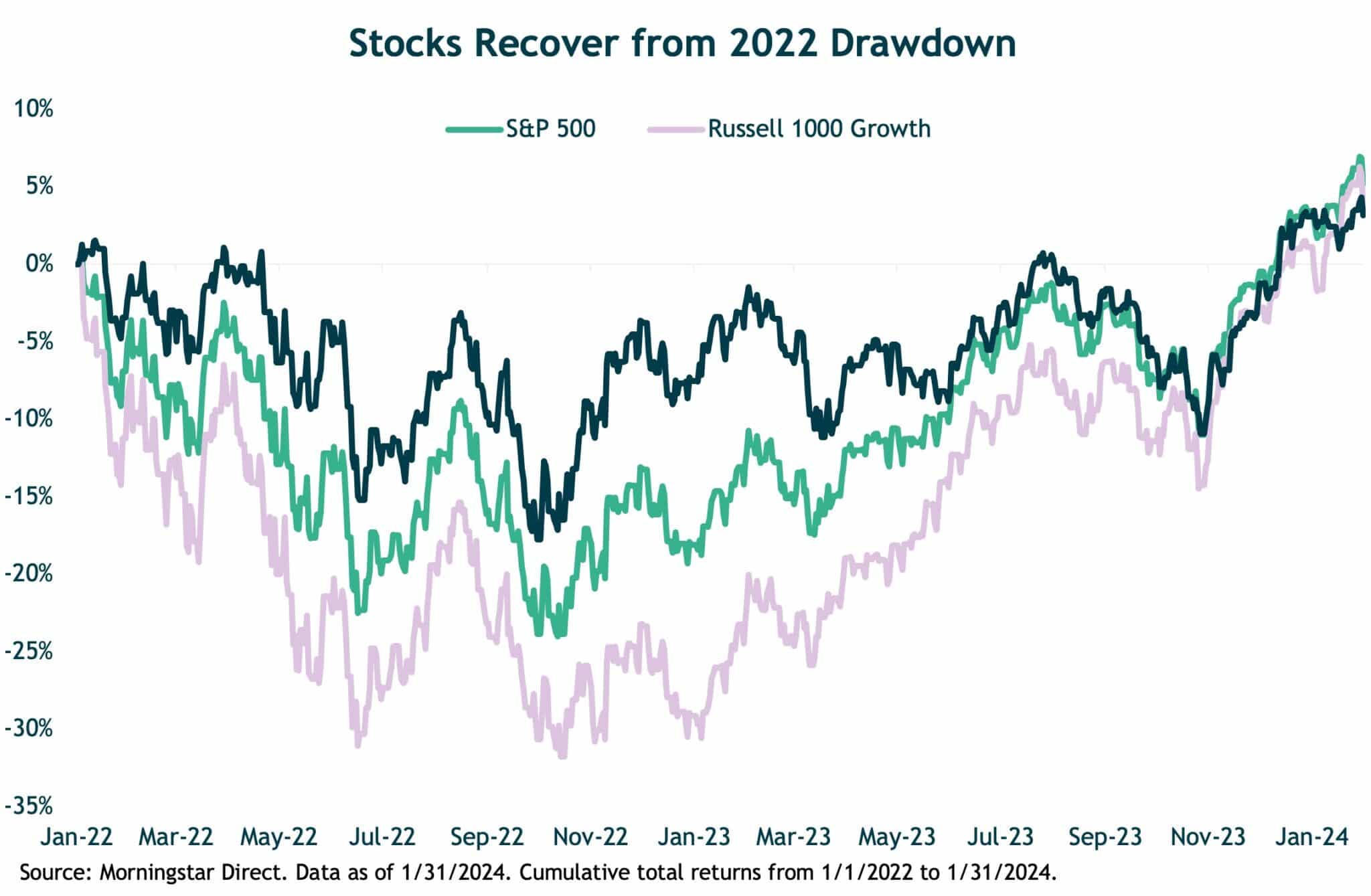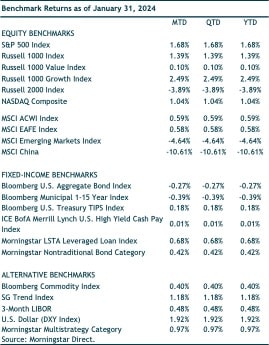RECAPPING THE JANUARY SHIFTS FROM MARKET LEADERSHIP TO MARKET PERFORMANCE
THE MONTH AT-A-GLANCE
- The calendar year changed but momentum for U.S. large-cap growth stocks continued into January
- Developed international markets (represented by the MSCI EAFE Index) posted a modest gain despite a strengthening U.S. dollar
- Emerging-markets equities (represented by the MSCI Emerging Markets Index) fell during January as concerns about China’s economy intensified
- The U.S. Federal Reserve held rates at current levels and Chairman Powell pushed back on the idea of rate cuts as soon as March
MARKET RECAP
After an extraordinary last two months of 2023 for U.S. small cap stocks, leadership was handed back to their larger brethren. The S&P 500 returned a modest 1.7%, while the Russell 2000 Index dropped 3.9% in January. The larger, growthier areas of the U.S. market outperformed the smaller, value segments.
The S&P 500 hit a new high in January after nearly two years. After hitting 4,797 at the start of January 2022, the S&P 500 saw a price decline of 25%, which then took roughly 15 months to recover. The S&P 500 finally hit a new high on January 19th reaching 4,840. From the start of 2022 through January 2024, the S&P 500 has a cumulative return of 5.2% (including dividends). And while it may seem like it’s been a market dominated by growth stocks, that was not the case over the trailing two years. Large-cap growth and value stocks have about the same cumulative return since the start of 2022. Value stock held up relatively better during 2022 and it took a strong rally in 2023 for growth stocks to end up at the same level as value stocks.

Developed international stocks (MSCI EAFE) underperformed with a return of 0.6% in dollar terms. The U.S. dollar strengthened over the month by 1.9%, trimming MSCI EAFE’s local currency return of 2.6% (which was better than the S&P 500). Emerging-markets stocks (MSCI Emerging Markets) were the laggard during the month with a drop of 4.6%. Chinese equities (MSCI China) were the main detractor in January (loss of over 10%). Chinese stocks had a burst of hope from November 2022 to March 2023 during which they soared 53% on the back of their economy reopening. However, since then, the recovery has been below expectations and equity markets have been unable to get off the mat. MSCI China is about 60% off its February 2021 peak.
Interest rates inched higher during January with the benchmark 10-year U.S. Treasury going from 3.88% to 3.99%. The Bloomberg U.S. Aggregate Bond Index fell 0.3% in the month. More credit-oriented sectors fared better with U.S. corporate bonds and high yield bonds eking out small gains.


